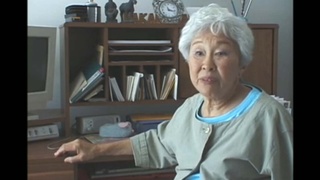Interviews
Not able to go to Manzanar on a furlough
Major, or at that time Captain…I forgot his name already, came to Camp Grant seeking volunteers for the MIS, Military Intelligence School, I volunteered along with a bunch of my friends and we went to Camp Savage. And normally the class is 6 months and they put me into a special 3 month for so-called advanced students and most of them were Kibeis in there and there’s only 1 or 2 Niseis and I had a heck of a time cause there’s no way I could keep…you know be like the Kibeis so I had to study twice as hard you might say. And we got along ok, and then we would get a furlough before we go overseas. So I put in for Manzanar, and they said you cannot go there. And I said,” Why?” They said,” well, no Niseis, even soldiers are allowed in into the West Defense Zone at that time.”
Later they rescinded that regulation but at that time, we couldn’t get there. So that’s when I got really angry, and about 20 of us raised holy hell you might say And then the questionnaire came out, 27, 28…I said I’m loyal to the U.S., but I’m no longer willing to go wherever ordered, my fight for liberty is here and not over there.
Date: March 25, 2005
Location: California, US
Interviewer: Sojin Kim
Contributed by: Watase Media Arts Center, Japanese American National Museum









